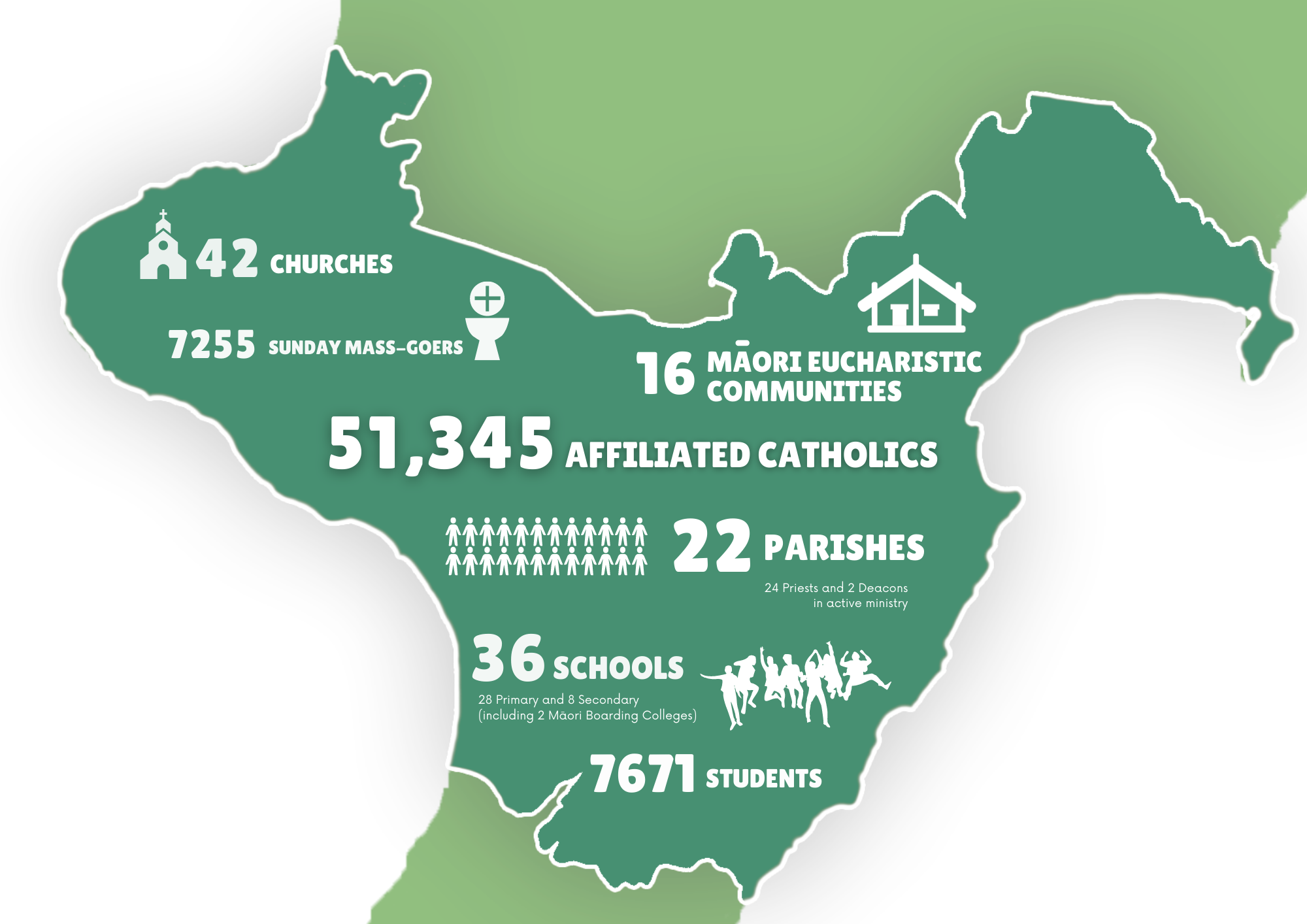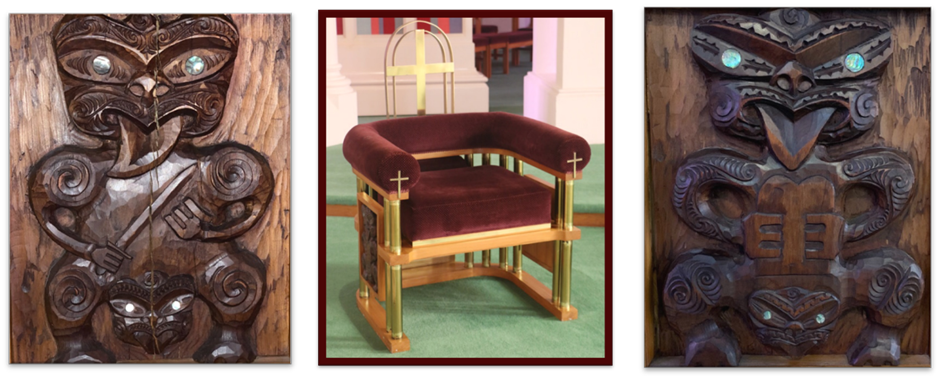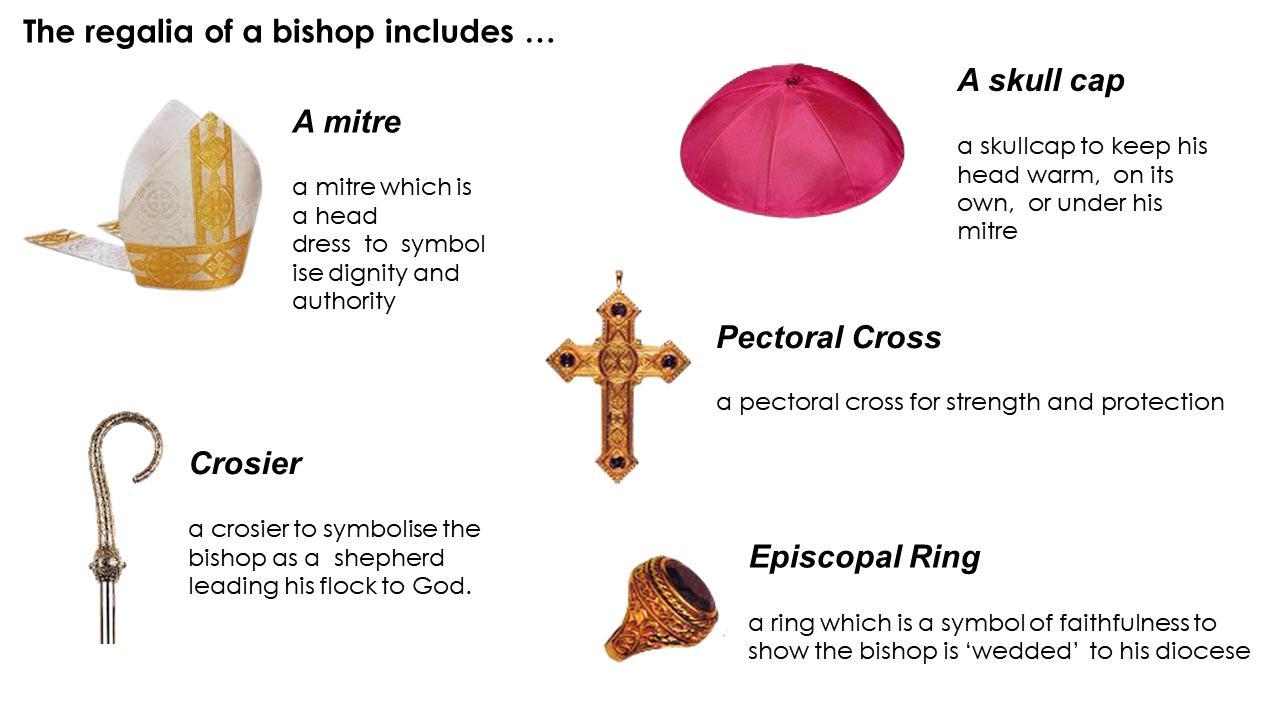The Catholic Education Office prepared a resource for schools to use at the start of Term 2 after the announcement of Bishop-elect John Adams as Bishop of Palmerston North. The resource aimed to the role and various symbols of a bishop.
What is a bishop?
A Catholic bishop is a high-ranking clergy member entrusted with the spiritual and administrative leadership of a diocese, a geographical region within the Church. They oversee parishes, clergy, and religious institutions, ensuring the faithful receive sacraments and pastoral care. Bishops are responsible for promoting Catholic teachings, fostering unity, and addressing local challenges. They also maintain communion with the Pope and adhere to Church doctrines. Guided by a commitment to service, bishops strive to lead their communities in faith, compassion, and social justice while upholding the values of the Catholic Church.
Bishops are often associated with shepherds, an image that comes from the Bible and old Church customs. In the Bible, Jesus is the “Good Shepherd,” taking care of his followers. Bishops try to be like that too, watching over and leading their flocks. They teach about faith, give guidance, and protect their communities. The bishop’s staff, called a crozier, looks like a shepherd’s staff and represents their role. Basically, it shows that bishops are like shepherds, responsible for taking care of their people and their faith. It’s all about being a leader and guiding the Catholic Church.
What is a diocese?
A diocese is a geographical region. It includes all the parishes in that area. As the Diocese of Palmerston North, we reach from the mountain in the north to the Manawatu river in the south, from Mokau across to Wairoa, and from Foxton to Eketahuna. This is the “portion of God’s people” that make the one, holy catholic and apostolic Church present in this time and this place. The numbers below provide a snapshot of the profile of the Diocese of Palmerston North.

Symbols
Cathedra
There is a special chair in the cathedral called a cathedra.
The bishop’s chair is called a cathedra from the Latin word for chair and it is the presence of the bishop’s cathedra in a church that makes it a cathedral.
The cathedra is a symbol of the bishop’s teaching authority and pastoral responsibility in the diocese.
The Cathedra in the Cathedral of the Holy Spirit has significant Māori carvings on each side of it:
Moses, as the one who received the Law, and Solomon renowned for his wisdom, illustrate Old Testament figures central to modern day episcopal ministry.
As the Bishop sits enthroned facing the congregation he has on his left: Solomon, King of Wisdom, holding in his hand the Sword of Justice.
On the Bishop’s right stands: Moses, guide of the Chosen people, the Law-giver, holding the tablets of the law.

Coat of arms
On a bishop’s coat of arms, the hat is green and hanging from it are 12 green tassels, six on each side. There’s also a processional cross above the shield.
Each bishop can design his own coat of arms with symbols that are relevant to his diocese. It may also incorporate symbols, colours and shapes that represent significant events, persons or places in the life of the bishop.
He can also choose his own motto that will say something about his leadership. (Motto means ‘pledge’)

